Port to Port From CA$13,760 Per guest
Includes the following luxury inclusions:
- Food and beverages
- Butler service
- Shore Excursions
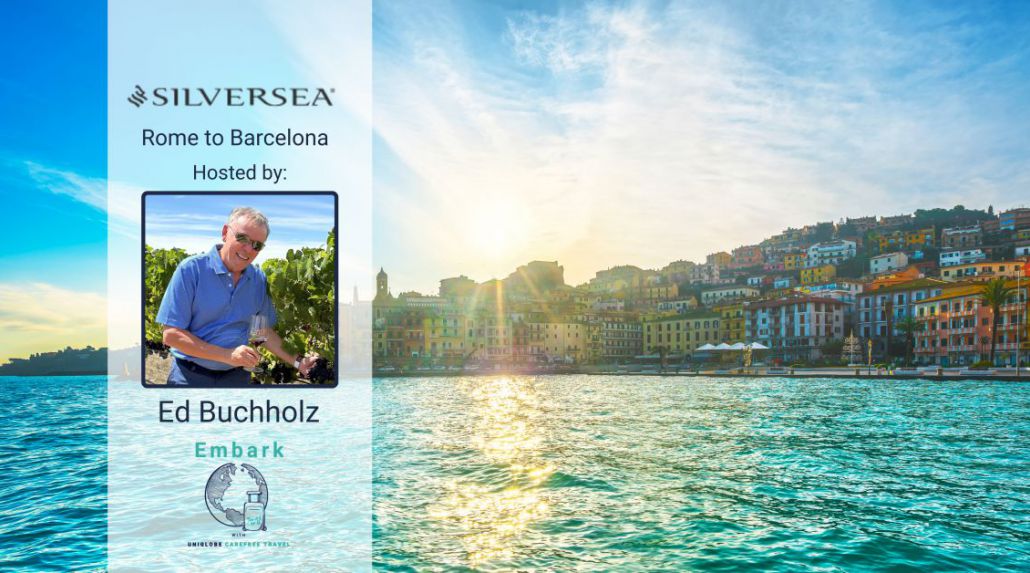
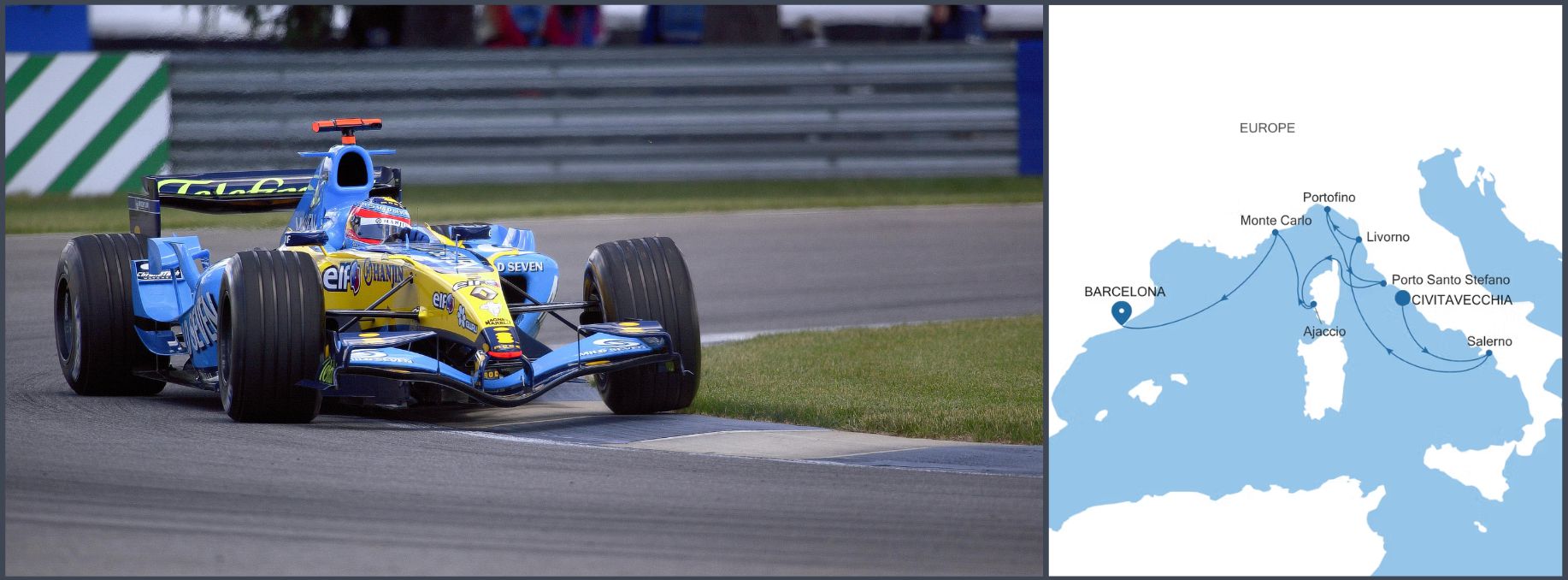

Located at the bow and aft of the ship, the Classic Veranda Suite will offer travelers a taste of our famous onboard luxury.
After a busy day of exploring, come home to the haven of the Classic Veranda Suite. With butler service, a queen-size bed (which can be separated on demand), and a beautiful marble bathroom, you won’t want to leave!
However, the best part of our Classic Veranda Suite is by far the large (5 m2, or 54 sq ft) private teak veranda, which offers sweeping views of the destination. Pure bliss.
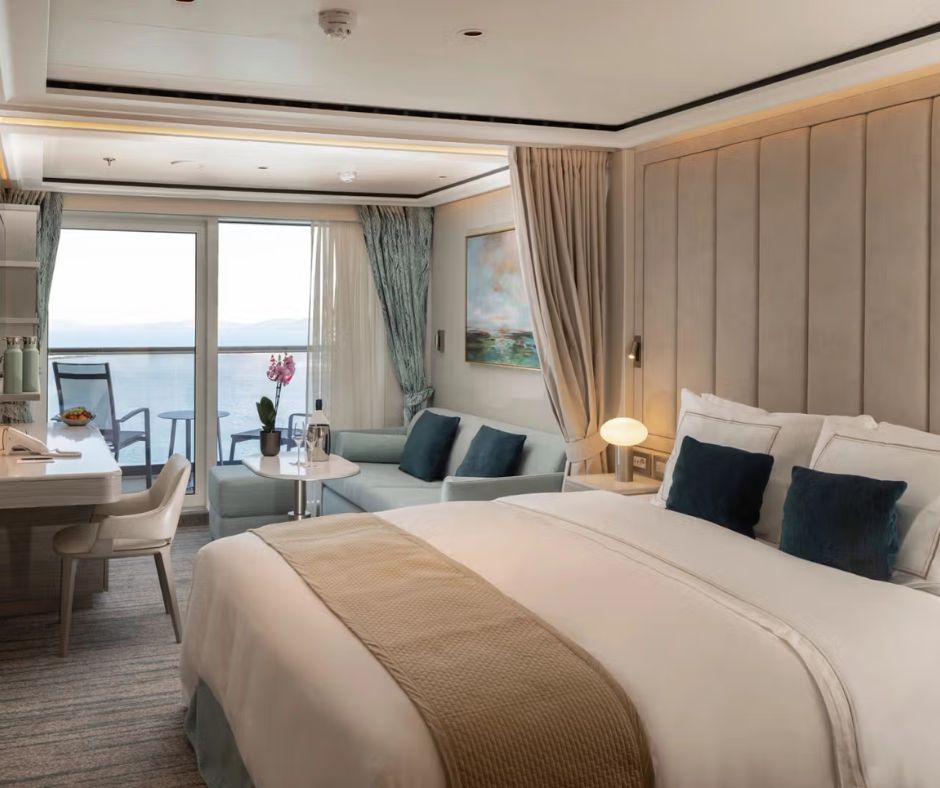
All roads lead to Rome, and with good reason - this city is one of the world's most thrilling, offering unmatched history along every street. An evocative, inspiring, and utterly artistic capital of unrivaled cultural impact, Rome is a city of back-to-back landmarks, which will take you on an exhilarating journey through the ages. This may be one of the world's oldest cities, but it's well and truly lived in. The ruins are punctuated with murmuring cafes, and the outdoor seating of restaurants sprawls out across piazzas, enticing you to sample tangles of creamy pasta and crispy pizzas. Rome's incredible Roman Forum is littered with the ruins of its ancient administrations, which have stood firm for 2,000 years, since the times when the area was the center of the Western world. Few sites are more simultaneously beautiful and haunting than that of the storied Colosseum, which looms deep into Rome's rich blue sky. Take a tour to learn details of the grisly goings-on within. The best way to experience Rome is to wander its streets, gelato in hand. There is a lot to see here - whether it's the domed spectacle of the Pantheon, or the elaborate flowing waters and artistry of the Trevi Fountain. Vatican City is an astonishing, colossal display of Catholic grandeur, while the Spanish Steps - crowned by the Trinità dei Monti church - offer a beautiful spot to gather and soak up the lively atmosphere of this humming city. With so much on the to-do list, you'll relish the breaks you take, enjoying simple pleasures like a strong espresso, or fresh pasta with tomato sauce and ripped basil.
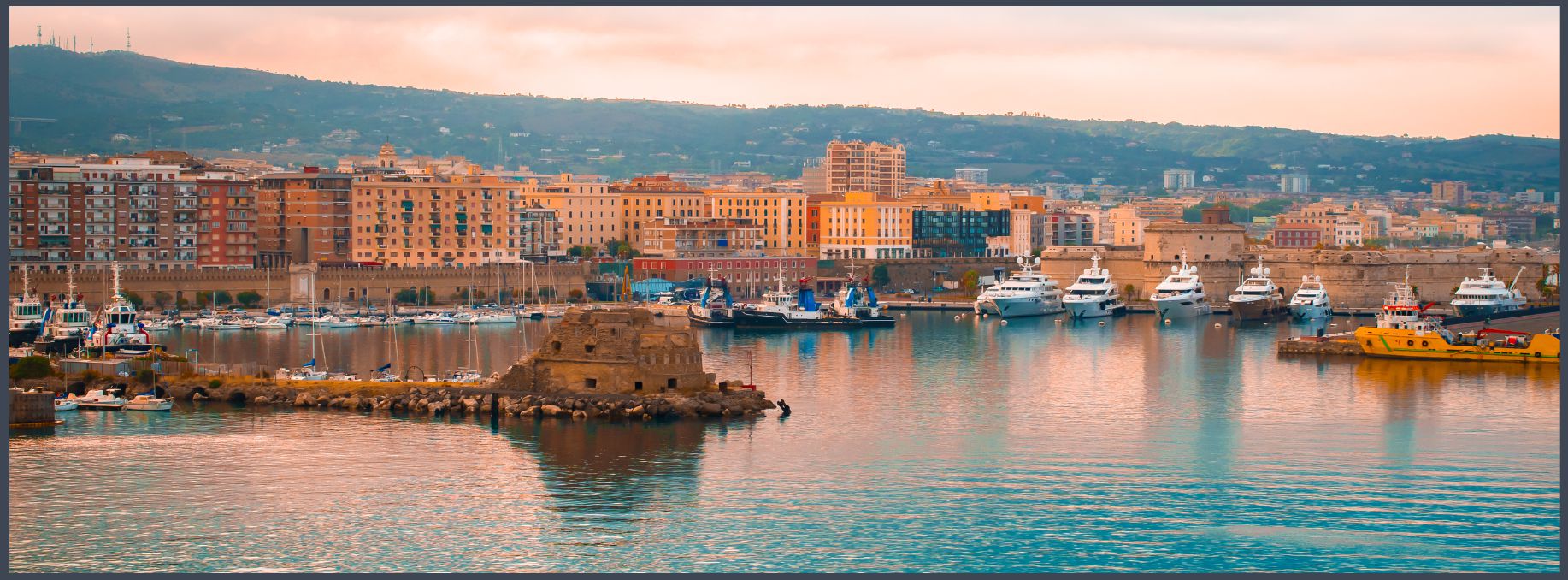
Have a taste of dolce vita in Salerno. The city is situated at the northern end of the Gulf of Salerno, near the stunning Amalfi Coast. The old town, rising up the slopes of the hill on the site of the ancient Salernum, still bears evidence of its great days during the medieval period. It had the oldest medical school in Europe, which flourished from the 11th century until it was closed down by Napoleon's brother-in-law, Murat, in 1812. Today, Salerno's main attraction is an imposing Romanesque cathedral, built in 1085 and remodeled in the late 18th century. A flight of steps leads up to an atrium with 28 columns from Paestum and fourteen ancient sarcophagi. The magnificent bronze doors were made in Constantinople in 1099. Inside is the ornate tomb of Margaret of Anjou and the tomb of Pope Gregory VII, who died in Salerno in 1085. In the richly decorated crypt under the altar lie the remains of the Evangelist Matthew, brought here from Paestum. A 45-minute walk from the cathedral leads to a hilltop crowned by the old Lombard Castello, from where extensive views are available. Along the seafront, to the east of the harbor, extends a fine promenade lined with impressive modern buildings. The Corso Giuseppe Garibaldi is the town's principal traffic artery. Salerno is the gateway for travelers for visits to the Greek temples of Paestum. Other favorite excursions from here are to Pompeii and to visit the popular resort towns of Amalfi and Ravello.
Included Shore Excursions
Leisurely Amalfi by Motorlaunch
On arrival at the pier, board a local motorlaunch (small ferry) for a cruise transfer along the Amalfi Coast to Amalfi town.
Amalfi is a romantic, Moorish-style resort town overlooking the Bay of Salerno at the foot of the steep Lattari Hills. In the centre of the town stands the 11th-century Cathedral of St. Andrew, said to hold the remains of the apostle. Distinctive for its black-and-white facade and its mosaics, the building features bronze doors cast in Constantinople in 1066 and a bell tower dating to the 13th century.
Upon arrival, your guide leads you to the main square, the Piazza del Duomo pointing out the main highlights, including the cathedral along the way. The next hour and 30 minutes are yours to explore the narrow alleyways lined with shops and boutiques and enjoy free time.
At the designated time, board a local Motorlaunch (small Ferry) for a 60-minute cruise transfer (not commented) along the amalfi Coast to the Town of Salerno.
Salerno on Foot with Cathedral
Discover the charm and history of Salerno on this guided walking tour through one of southern Italy’s most picturesque coastal cities. Nestled between the famed Amalfi Coast and the serene Cilento region, Salerno offers a perfect blend of seaside beauty and cultural heritage.
Your experience begins with a stroll through the city’s lush Communal Park and past the storied Minerva Gardens, a symbol of the city’s ancient botanical traditions. From here, make your way to the heart of Salerno "the Duomo, or Cathedral of Saint Matthew" a stunning 11th-century structure blending Romanesque and Baroque elements.
Inside the Cathedral, explore its ornate interior and descend into the beautifully frescoed crypt, believed to house the remains of Saint Matthew. Next, wind through the medieval lanes of the historic center, once the main commercial artery known as Via dei Mercanti. Lined with artisan shops and historical façades, this area offers a glimpse into Salerno's vibrant past and present.
A highlight of your walk will be a visit to a historic pastry shop, where enjoy a taste of Scazzetta del Cardinale, a beloved local dessert named after the red cardinal’s hat it resembles. Created in 1868, this cake features soft sponge layers and a striking strawberry glaze a sweet bite of tradition.
Your return journey takes you along the city’s scenic promenade, offering sweeping views of the Gulf of Salerno before arriving back at the ship.
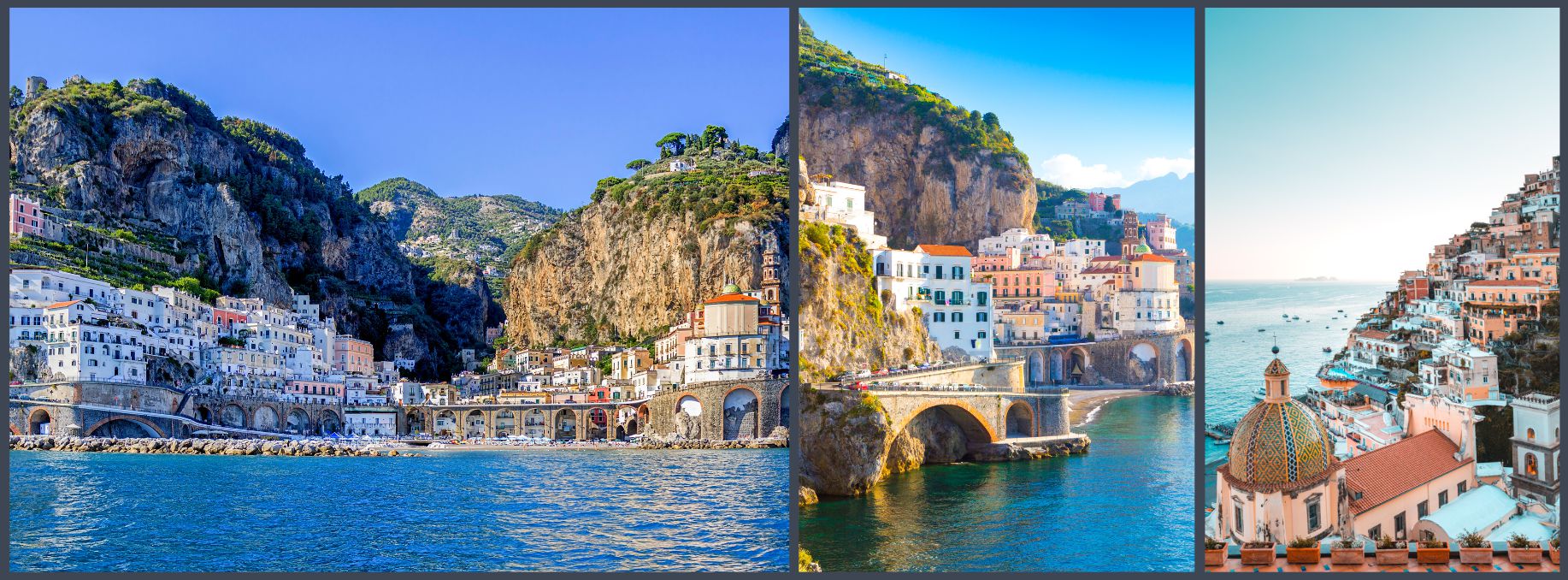
Days at sea are the perfect opportunity to relax, unwind, and catch up with what you've been meaning to do. So whether that is going to the gym, visiting the spa, whale-watching, catching up on your reading, or simply topping up your tan, these blue sea days are the perfect balance to busy days spent exploring shoreside.
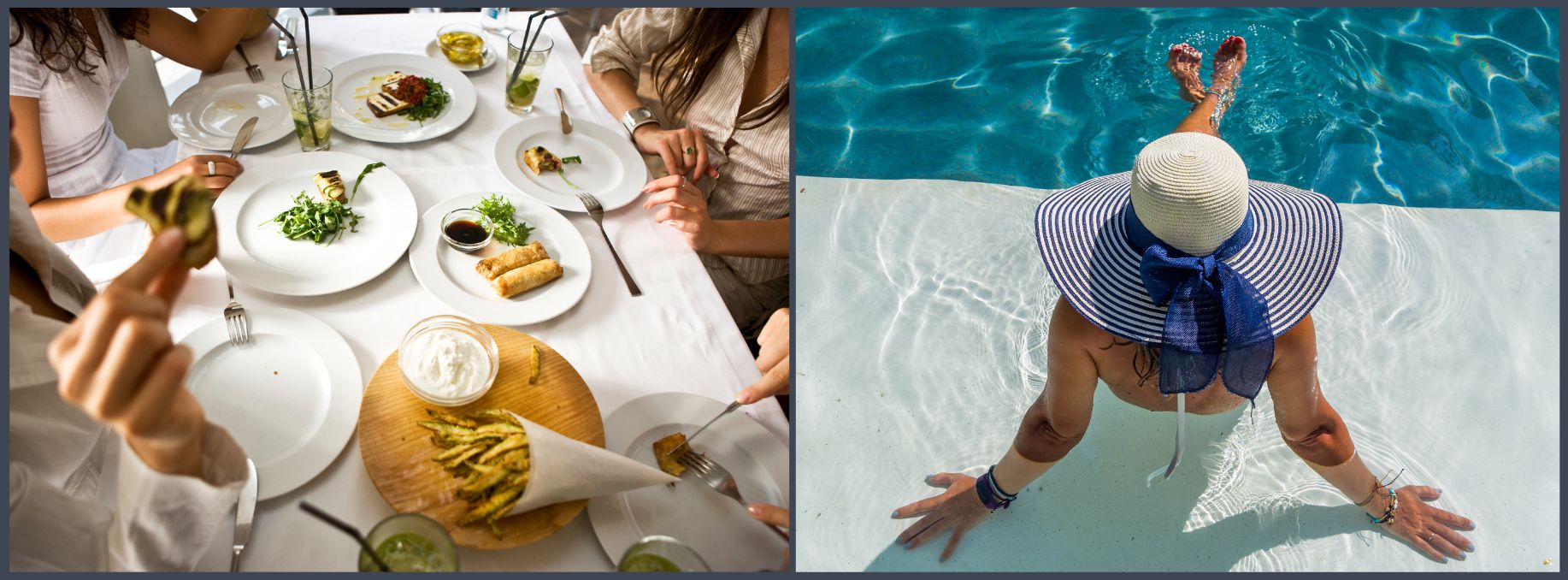
There are few more elegant places to salute the sunset than Terrazza Mascagni, Livorno's refined chessboard piazza. A historic port, and a beachy gateway to Tuscany, Livorno welcomes you ashore to explore this enchanted Italian region's sun-soaked beauty, rich flavors, and world-renowned fine art. Stay in Livorno to explore 'Piccolo Venezia', or - Little Venice - a quarter of the town that's laced with canals, little marble bridges, and plenty of tempting eateries. With its bustling market, fortresses, and iconic waterfront, there is plenty to keep you busy here, but most will be tempted to venture inland to explore more of Tuscany's many charms and artistic wonders. Test your nose, as you breathe in the subtleties of Tuscany's vineyard-draped scenery and visit wineries showcasing the best of the renowned flavors of the Bolgheri wine-growing area. Or head out to Prato, where you'll find tightly woven textile history. Pisa's showpiece tower is within reach, as is Florence's city of immense and imaginative Renaissance beauty. Admire the delicate carving of Michelangelo's masterpiece, the David statue, and note the provocative stance as he casts a dismissive glance towards Rome. Stand before the city's majestic black and white cathedral - the Cathedral of Santa Maria del Fiore - with its colossal brick dome. The view down over Florence's river and grand dome from Piazzale Michelangelo, meanwhile, is one of Italy's finest. However you choose to spend your time in Tuscany, you'll discover an artistic region, filled with beauty designed to appeal to every sense.
Included Shore Excursions
(Wheelchair Accessible) Pisa
This tour involves a moderate amount of walking of about 0.7 miles and is specially designed for guests with limited mobility and guests who utilize a wheelchair or a scooter.
Start your Accessible Livorno Shore Excursion to Pisa by meeting your driver/guide at the Livorno cruise dock. Board your wheelchair accessible van, and enjoy the approximately 40-minute drive into the scenic town of Pisa.
Pisa - Since the beginning of the tourist brochure, Pisa has been known for just one thing, the Leaning Tower. However, this world-renowned landmark is but one component of the city's amazing religious core, the Campo dei Miracoli. Here, the Duomo, Baptistery and Camposanto complete an unrivalled quartet of medieval masterpieces. These and a dozen or so churches and palazzo scattered about the town belong to Pisa's 'Golden Age', which took place from the 11th to the 13th centuries when the city was still a port, and one of the maritime powers of the Mediterranean.
Campo dei Miracoli - Since it was first laid out, Pisa's ecclesiastical centre has been known as the Campo dei Miracoli, or 'Field of Miracles'. The sight of it is as stunning today as it must have been to medieval travellers. Nowhere in Italy are the key buildings of a city arrayed with such precision, and nowhere else is there so beautiful a contrast of stonework and surrounding meadow.
Leaning Tower of Pisa - Your next stop is the Leaning Tower of Pisa (outside visit only). Underneath the pavement and turf of the Campo dei Miracoli lies a platform of saturated sandy soil, whose instability accounts for the tilting of the Leaning Tower. Begun in 1173, construction of the tower subsided when it had reached just three storeys in height. Over the ensuing 180 years, a succession of architects continued to extend it upwards until it was finally completed and topped with a bell-chamber in 1350.
The Duomo - Leaving the Leaning Tower, proceed to the Duomo for an outside visit. The Duomo was built in 1064, a century before the Campanile. With its four levels of variegated colonnades and subtle interplay of dark grey marble and white stone, the Duomo is the archetype of the Pisan Romanesque style; a model often imitated but never surpassed.
The Baptistery - A visit is then made to the Baptistery. The third building of the Miracoli ensemble, the circular Baptistery is a bizarre mix; its three storeys of Romanesque arcades peak in a crest of Gothic pinnacles and its dome is shaped like the stalk of a lemon.
After some free time, rejoin your accessible Van for the 40-minute ride to Livorno.
Florence on your Own
Experience the spectacular medieval beauty, architecture and landmarks of Florence during this full-day tour of the city at your leisure. This is the perfect tour for all those who have been to Florence before or feel independent enough to explore it without the help of a local guide.
Depart the pier for the approximate 1.5-hour drive to Florence. En route, your guide provides you with historical and practical information about the city, along with a detailed map of the historical centre to make it easier to get around. This visit represents an ideal tour for visitors who have been to Florence before, or feel independent enough to explore the city without the help of a local guide.
Florence - Upon arrival in Florence, you are dropped off at the parking lot and from here, together with your escort, walk to all the main highlights of Florence are within walking distance.
Florence is a city of many layers, at once an overrun tourist magnet and a living, breathing Medieval city that is home to proud Florentines. The stomping ground of Michelangelo, Leonardo Da Vinci, Dante and Machiavelli, among others, Florence and its cultural importance cannot be overstated. It is home to three of the world's most renowned museums, the Uffizi, Galleria dell'Accademia and the Bargello, and boasts an incredible number of important churches that house equally-important master works.
A walker's city, the centre of Florence is a compact labyrinth of alleys and piazzas. During your visit, the Ponte Vecchio, Boboli Gardens, Pitti Palace and the Duomo are but a few of the many exquisite sights the city has to offer.
Following your day in Florence on your own please return to your appointed meeting-point and time for the approximate 1.5-hour drive back to the pier.
Medieval Lucca
Explore the fascinating streets and squares of Lucca during a scenic and memorable half-day tour of this historic medieval city. Lucca endears itself to everyone who visits, hidden behind imposing Renaissance walls with cobbled streets, handsome piazzas and shady promenades; it makes for a perfect destination to explore by foot.
Depart the pier for the approximate 45-minute drive to Lucca. Upon arrival, your tour begins inside the massive red bricks walls, which were built between 1504 and 1645, and are amongst the best-preserved Renaissance defenses in Europe.
Lucca - Lucca is enclosed by massive red brick walls, which help to give the city its special character by shutting out traffic and the modern world. Within these walls, Lucca is a peaceful city of narrow lanes, preserving intact its ancient Roman street plan. Unlike several other Tuscany's cities, Lucca is flat; many locals use bicycles, which impart an additional charm to the city. This memorable outing is ideal for those looking to experience a Tuscan city that is rich in history, art and architecture, but is hidden from the crowds of tourists.
Church of San Michele - Along the way, an inside visit is made to the Church of San Michele in Foro, which stands on the site of the ancient Roman Forum. It has a wonderfully-rich Pisan Romanesque façade that competes in splendour with that of St. Martin.
Guinigi Tower - Another outside visit is then made to the Guinigi Tower, one of many in Lucca that belonged to the Guinigi family, rulers of the city in the 15th century. The tower has a small roof garden, with some trees sprouting incongruously at the top.
Anfiteatro Romano - Next, proceed to the Anfiteatro Romano, formerly the ancient Roman Amphitheatre. Today, it is enclosed by medieval houses that were built up against the walls of the amphitheatre. It's perfectly-preserved shape reminds us that Lucca was founded by the Romans in 180 B.C.
Church of San Frediano - From here, continue on to the Church of San Frediano, which is adorned with a striking façade and a 13th-century mosaic (outside visit only). Inside, there is a splendid Romanesque font and beautiful frescoes. In the chapel dedicated to Santa Zita, her well-preserved body is interred.
Church of San Martino - Your next stop is the Church of San Martino (outside visit only). Lucca's extraordinary cathedral, its façade abuts incongruously on to the campanile. St. Martin is the Roman soldier depicted on the façade dividing his cloak with a sword to share with a needy beggar.
Via Fillungo - The guided portion of your visit concludes at Via Fillungo, Lucca's principal shopping street, which winds its way through the heart of the city towards the Roman Amphitheatre.
Following your walking tour re-boarding your coach for the return drive to the pier.
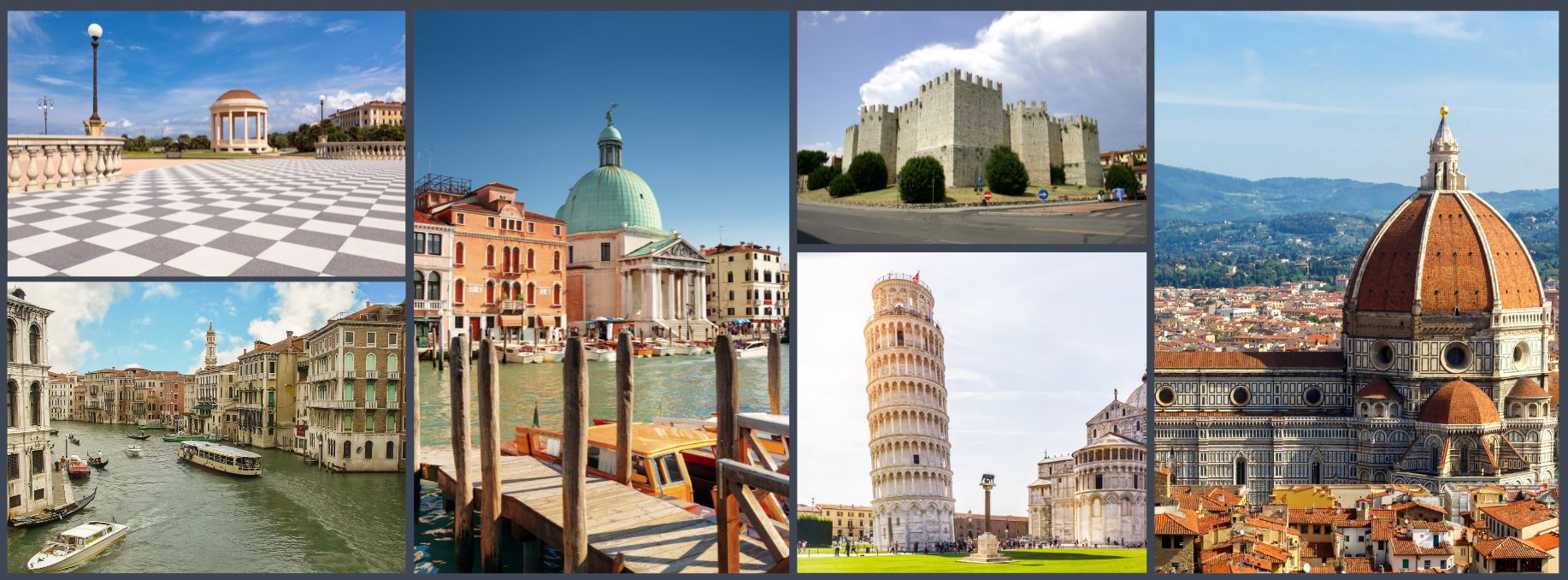
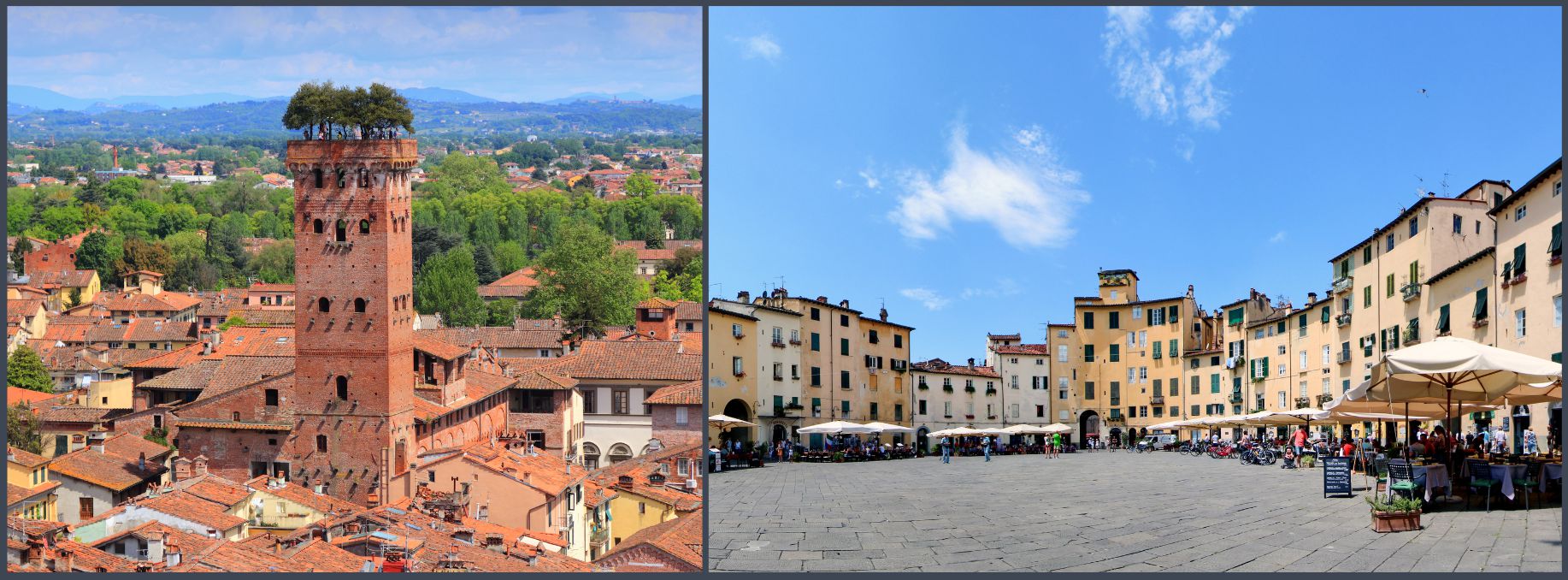
Effervescent and exclusive, Portofino rests on a privileged peninsula. Lavish yachts mingle together, seeking out coveted berths in the harbor, while gelato drips onto the stone-paved streets in this, the most alluring and glamorous town of the Italian Riviera. This section of the Ligurian Coast is a protected area, and home to some of the country's most picturesque, and jaw-dropping scenery - which is best viewed from the deck of a sailing boat. Crisp white villas roll out across the verdant green hillsides, surrounded by laden vineyards and olive groves. Down in Portofino itself, the buzz of chatter and the clatter of cutlery, provide the soundtrack to busy terrace bars and restaurants, which serve up fine food and delicious sea views. Portofino's achingly beautiful harbor arcs around the lapping waves, with a warmly-hued waterfront of peach and apricot colors - which also adorns postcards and promotional travel guides of Italy. For the authentic Portofino experience, sail out onto the tranquil waters of the Gulf of Tigullio, to mingle amongst the privileged at play, or settle back in the shade as you take aperitivo on the picturesque waterfront Piazzetta. Here you can sip the famous Ligurian wines, and stave off hunger with focaccia con il formaggio - or platters of fine cheese and hams. Deeper into Portofino, you'll find artisans crafting their wares and weaving together lace, or you can ascend to viewpoints like the lemon-shaded Church of San Giorgio, to look over the pretty jumble from up above. A wander out along the headland to the tapering tip of the peninsular, rewards with the views of Portofino's iconic white lighthouse beaming out light and welcoming ships to this slice of Riviera heaven.
Included Shore Excursions
Portofino Walking Tour
Portofino, Church of San Giorgio - A very pleasant walk heads up to the right as you face the harbour: here you'll find a very attractive walking path through one of the largest concentrations of flora and fauna in the Mediterranean for views of the entire bay and the Tigullian Gulf. From here proceed by foot up the hill to the Church of San Giorgio. The Shrine was built in Romanesque style in 1154. During the Second World War the church was completely destroyed by a bomb dropped by a fighter-bomber. In 1950, the church was restored keeping the original structure in mind.
This small church, sitting on a ridge above Portofino, is said to contain the relics of its namesake, brought back from the Holy Land by the Crusaders. Portofino enthusiastically celebrates St. George's Day every April 23.
Faro Lighthouse - Pristine views can be had from the deteriorating Faro (lighthouse) at Punta Portofino, a 15-minute walk along the point that begins at the southern end of the port. The lighthouse was built in 1917 and is attached to a 2 storey light keeper's house. The lighthouse is completely automated, powered by a solar unit and is still operational.
Along the seaside path you can see numerous impressive, sprawling private residences behind high iron gates.
Santa Margherita & Portofino
Experience the rich traditions, history and beautiful landscapes of the best-known resorts of the Italian Riviera during this scenic, half-day visit to Santa Margherita and Portofino.
Santa Margherita Ligure, Coastal Cruise, Walking Tour, Free Time
Meet your guide at the pier, walk a short distance and step aboard your local Motor boat chartered for Silversea Only towards the lovely Santa Margherita Ligure.
This short coastal cruise (15 minutes only) will allow you to take stunning photos of the beautiful coast between the two villages.
Once arrived in Santa Margherita, your guide will lead you in a guided tour to explore this lovely town.
Nestled in a sheltered bay along one of the most enchanting stretches of coastline, this beautiful town is rightly considered the Pearl of Tigullio.
Rooted in the days of ancient Rome, Santa Margherita Ligure is marked by an intense and fascinating history. Over the centuries it has witnessed devastation and rebirth, suffered occupation by Saracen pirates, and its identity has been shaped by these ups and downs.
After a guided tour of the centre, you will have some free time to explore independently.
Portofino, Walking Tour, Church of St. George
Return then to Portofino with the local Motorboat and explore this village with your guide.
Portofino is one of the most iconic places of the Italian Riviera, All over the world, in fact, they know the image of this magnificent seaside village, nestled in the green headland, with its tall colorful houses arranged in a semi-circle around the famous Piazzetta.
The guide will also take you to the church of St. George, which is a very small temple built on the cliff of the picturesque promontory. During its history this church has been destroyed several times since it was built in 1154.
After the guided tour, walk back to the pier or enjoy more time in Portofino on your own.
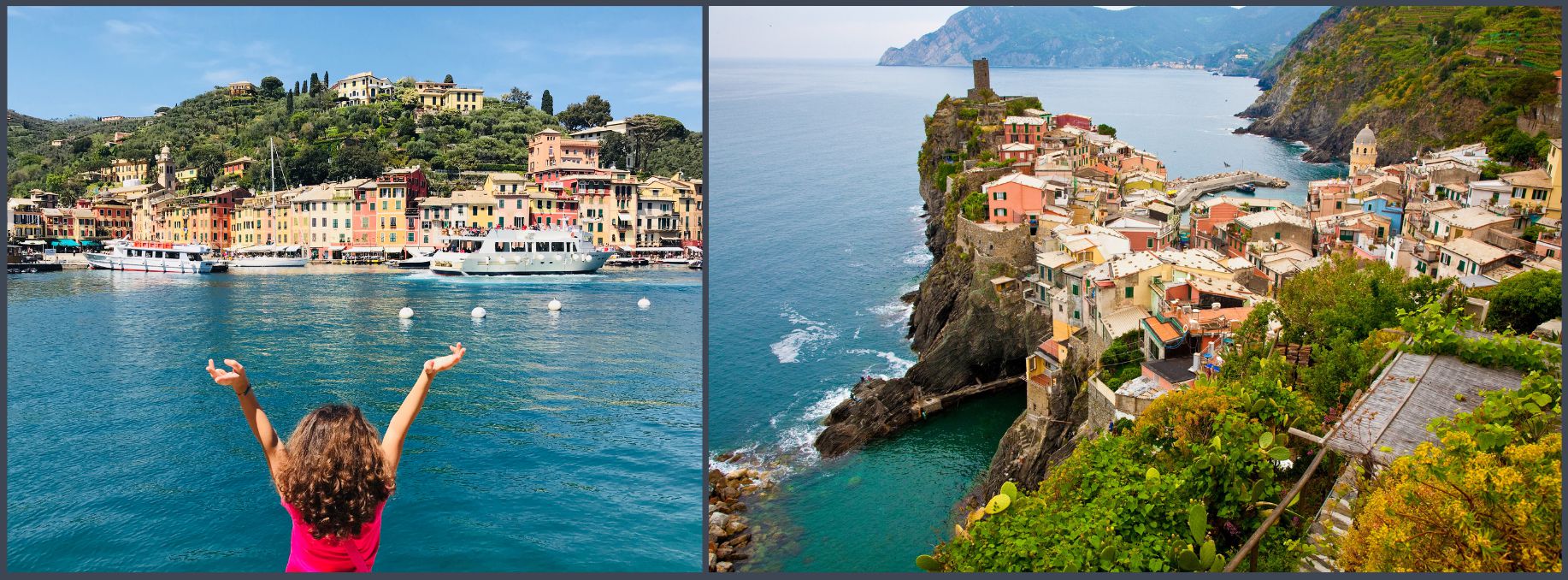
A summer escape for Rome's historic elite, the stacked waterfront of Porto Santo Stefano is a secluded taste of idyllic southern Tuscany. Physically closer to Rome than Florence, the city is strung to Italy's western coast by two sandy harnesses and sits on the unique peninsula of Monte Argentario - which was once an island. Flamboyant pink flamingos and herons stroll through the encased lagoon, while Porto Santo Stefano's waterfront hums with clinking cafes and strolling visitors. The luxury yachts in the harbor show that Porto Santo Stefano has lost none of its luxury appeals, and with beaches, wild hikes, and waterfront beauty, it continues to lure visitors to this secluded escape. Known for its fishing and cuisine - which is based on heavy use of the Tyrrhenian Sea's juicy bounty. Stroll to Piazza dei Rioni for a dripping lemon gelato, or wander the streets noticing the lingering World War II damage - the city was heavily bombed during the conflict. Fortunately, the historic, star-shaped, Spanish fort was spared, and it still watches out resolutely over the waters. Built during the Napoleonic Wars, it fortified the exposed town against pirate raids and offers beautiful views over the old town's terracotta roofs. Rugged coastline falls to secluded beaches, with a wilder, unkempt charm. Sail the coves - seeing cascading olive groves - or island hop to Giglio and Giannuti, which lie 12 miles from shore, and can be seen from the monastery-topped Argentario Mountain. On the other side of the promontory, you'll find Porto Ercole - where the lifeless body of the Old Master, Caravaggio, was discovered.
Included Shore Excursions
Panoramic of Monte Argentario & Porto Ercole Walking Tour
Monte Argetario is situated in the south of Tuscany, and is the promontory considered the natural gateway to the Tuscan archipelago, with some close-by islands such as Giglio and Giannutri island, both part of the Tuscan Nature reserve.
Scenic Drive along the Argentario Coast, Porto Ercole Walking Tour - Board your coach for the 30-minute panoramic drive to Porto Ercole, a lovely seaside resort located on the south-east of the Argentario promontory.
Here, you will stop for a walking tour in the old village and fishermen's port. The first inhabitants of Porto Ercole were fishermen and still today, walking along the small port, one encounters old sea wolves intent on repairing fishing nets. You will take a walk in the heart of the village among alleys, squares overlooking the sea and stairways. You will walk along the promenade, where bars and restaurants with terraces overlooking the sea alternate with shops created from what once were fishermen's warehouses. You can still observe the construction sites dedicated to the repair work on the boats, and the landing of fish from the returning fishing boats.
Panoramic Drive, Convent of the Passionist Fathers - In addition to the natural charm of this region, you will have the opportunity to admire the imposing Spanish fortresses that were built in the 16th century: the Spanish fortress in Porto Santo Stefano and Forte Filippo in Porto Ercole. On the way back to the port, you will take a short detour to the convent of the Passionist Fathers, at the summit of Monte Argentario. At an altitude of 273 meters you will enjoy the splendid panorama that can be admired from the square onto the Orbetello lagoon and town. The convent is surrounded by generous vegetation and was built in the late 17th c. The Passionist Fathers live in community and lead a life of study, prayer and missionary activity. Many visitors stop by the Convent's shop to buy liquours or honey produced locally.
Drive back to Porto Santo Stefano.
Porto Santo Stefano & Fortress on Foot
Discover the history, architecture, and charm of Porto Santo Stefano on-foot during this picturesque sightseeing excursion.
Porto Santo Stefano, Guided Walking Tour, Mount Argentario, Mediterranean Sea - Depart the pier for a guided walking tour of the port village of Porto Santo Stefano, the main town on the north-western promontory of Mount Argentario and only one of the three ports on the peninsula. Mount Argentario is a wooded mountain overlooking the blue Mediterranean Sea, a promontory infused with nature, history, and human activities. Porto Santo Stefano has four quarters, in Italian Rioni: Croce, Fortezza, Pilarella, and Valle. Various bays of Porto Santo Stefano enable yachts and sailing vessels to operate throughout the year; these same bays were ideal hideouts for pirate incursions of a bygone era.
Downtown Area, Old Town, Monuments, Four Quarters - Whilst strolling along the narrow, winding streets of Porto Santo Stefano to the downtown area, learn about the history of this old fishing village built on ‘rock’, which developed into a tourist destination famous throughout the Mediterranean. The village of Port Santo Stefano has four quarters, in Italian Rione: Croce, Fortezza, Pilarella, and Valle. Walk to the small port, where fishing boats and yachts wait to sail again. The municipality is here, in the centre of the Old Town, which had developed around a watch tower offering protection to its inhabitants since the 15th century, now the imposing Spanish Fortress.
Spanish Fortress, Saint Stephen Parish Church, Artisan Tools, Gelato Stop - Discover the historic Spanish Fortress, which was built during the Spanish Presidios and offers a breath-taking panoramic view of Porto Santo Stefano; visit the small museum displaying artisan tools that were utilized to craft the boats of the day. Leaving the Spanish Fortress, climb down to the Parish Church dedicated to Saint Stephen, in Rione Croce. Its Latin inscription, ‘Portvm Salvtis Indulgeat’, pleads the Patron Saint to grant a safe port to sailors. Afterward, A final stop is made for a creamy and refreshing gelato. At the conclusion of your tour, commence the short walk back to the pier.
Easy Panoramic of Monte Argentario & Orbetello
Monte Argetario is situated in the south of Tuscany, and is the promontory considered the natural gateway to the Tuscan archipelago, with some close-by islands such as Giglio and Giannutri island, both part of the Tuscan Nature reserve. This tour shows the best locations in the most comfortable way.
Panoramic Drive, Convent of the Passionist Fathers (outside only) - Board your coach for the 30-minute panoramic drive to the convent of the Passionist Fathers, at the summit of Monte Argentario. At an altitude of 273 meters you will enjoy the splendid panorama that can be admired from the square onto the Orbetello lagoon and town. The convent is surrounded by generous vegetation and was built in the late 17th c. The Passionist Fathers live in community and lead a life of study, prayer and missionary activity. Many visitors stop by the Convent’s shop to buy liquours or honey produced locally.
Orbetello Village, Optional Walking Tour (flat), Free Time - After the scenic view resume your drive to Orbetello. The first inhabitants of Orbetello were fishermen and still today, walking along the lagoon, one encounters traces of the fishing activity, such as the headquarters of the Slow Food presidia – I Pescatori di Orbetello. You will take a walk in the heart of the village to see the Cathedral, the main squares and small alleys leading to the Eastern or Western lagoon. You will walk along the corso, where you will enjoy some time at leisure to explore more on your own or indulge in a Gelato or cappuccino.
Scenic Drive - During your scenic drive in addition to the natural charm of this region, you will have the opportunity to admire the imposing Spanish fortresses that were built in the 16th century on the Argentario monastery: the Spanish fortress in Porto Santo Stefano and Forte Filippo in Porto Ercole. On the way back to the port, you will take a short detour on Via Panoramica, a coastal road that shows two of the Tuscan archipel islands: Giglio and Giannutri islands, both part of the National Park of the Tuscan isles.
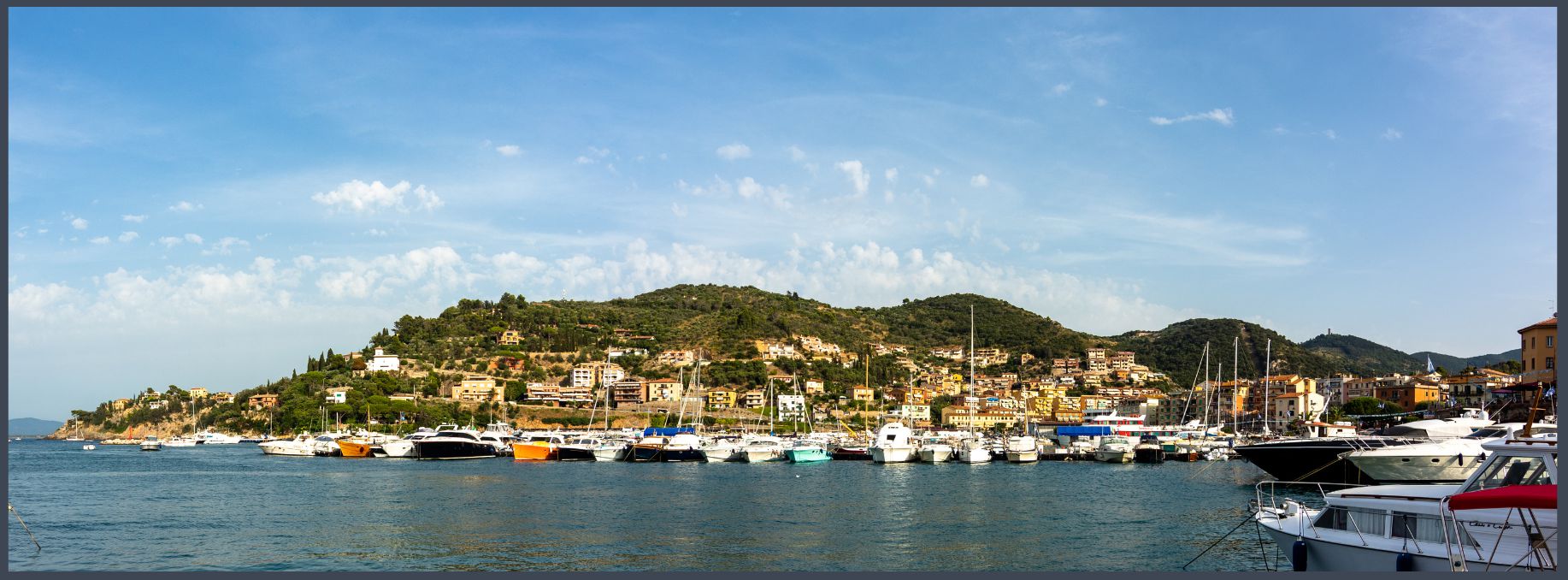
Famed as the island birthplace of French Emperor, Napoleon Bonaparte, Ajaccio has made a towering contribution to European history. Bonaparte may be omnipresent in Ajaccio - with statues watching out over palm-tree-lined streets bearing his name - but there is a lot more to this charming city, where an unhurried Mediterranean attitude mixes with the trendy buzz of a French Riviera resort. The stunning setting pairs glowing blue water with a dramatic backdrop of towering, snow-capped peaks. Bonaparte may have been famously short in stature, but he stands as a true giant of history. The National Bonaparte Museum is the ideal place to learn more about his life, in the very house where he was born in 1769. Just inside the modest Cathedral Notre-Dame-de-l'Assomption - surrounded by frescoed walls - you'll also see the stone font where he was baptized. Elsewhere, the perched watchtower of Îles Sanguinaires is a short boat ride away, or Plage de Capo di Feno's stunning, isolated band of white sand and transparent waters may tempt you outside of the historic city. Settle at a restaurant near the harbor to taste succulent wild boar, stewed in rich red wine casserole, or to crack into soft lobster meat. You also have to enjoy the famous fiadone cheesecake made from local brocciu cheese while you're here, and to let the magic of unique Corsican Polyphony music carry you away. Three singers expertly blend harmonies to create a spine-tingling combination of melody - you'll notice the distinctive style, as they each cover an ear to focus more clearly on their individual contribution.
Included Shore Excursions
Highlights of Ajaccio
Departing from the port, embark on a journey through the city’s rich history and picturesque landscapes. Drive along the lively Cours Napoléon, continue through the former English Quarter and Austerlitz Square, home to another tribute to Napoleon, a replica of the famous statue at Les Invalides in Paris.
Sanguinaires Islands Viewpoint - Leaving the city behind, your coach follows the scenic Route des Sanguinaires towards the northern tip of the gulf. Along the way, take in a series of idyllic sandy beaches and charming seaside developments. A stop at a panoramic viewpoint offers breathtaking views of the Gulf of Ajaccio, with the striking Sanguinaires Islands in the background. These uniquely shaped, reddish-hued islets have long inspired artists and are now an iconic symbol of Ajaccio. Enjoy a photo stop and some free time before returning to town.
16th-Century Baptismal Church, Casa Bonaparte (Exterior View), Place Foch - Next, visit the 16th-century church where Napoleon was baptized in 1771. Inside, admire the historic baptismal font, an elegant marble altar dating back to 1811, and a stunning painting by Eugène Delacroix. Pass by Casa Bonaparte, the birthplace of Napoleon, now a museum dedicated to his legacy. Enjoy an exterior view of this historic residence before continuing on foot toward Place Foch. Known locally as “Place des Palmiers,” this charming square is lined with towering palm trees and features a beautiful fountain adorned with four marble lions and yet another statue of Napoleon.
From here, it’s just a short walk or drive back to the ship, bringing your Ajaccio adventure to a perfect close.
Old Town Stroll & Fesch Museum
Embrace the scenic splendour and legacy of Ajaccio on-foot during this picturesque, half-day walking tour through the Old Town.
Ajaccio Old Town and Cathedral - Depart the pier for a guided stroll through the Old Town. Pass by a cluster of ancient streets, which opens up along the seafront, the square Foch with a statue of Napoleon dressed as a Roman Consul and the late-16th-century Cathedral.
Next, pass Maison Bonaparte, Napoleon's birthplace, which is located in the town centre. See a statue of Napoleon on horseback at the Place du Diamant,
Fesch Museum - Proceed along Rue Fesch, which is lined with lovely boutiques, cafés and restaurants. Upon arrival at the Fesch Museum, explore the museum's collection, which includes a section dedicated to Napoleon and 14th-to-19th-century paintings by artists such as Titiano, Veronese and Boticelli.
Old Town Stroll & Bonaparte Museum
Explore the highlights of Ajaccio on-foot during this picturesque, half-day walking tour through the Old Town.
Ajaccio Old Town and Cathedral - Depart the pier and begin your approximately one-hour guided walking tour through the Old Town. Along the way, explore the cluster of ancient streets spreading north and south of Place Foch, which opens on the seafront. On the square, see a statue of Napoleon dressed as a Roman Consul and surrounded by four lions. Next, pass by the Cathedral, completed in 1593 and dedicated to the Assumption of the Blessed Virgin Mary. The Cathedral is remarkable for its modest dimensions, imposing dome and fine ochre facade that lend a unique charm to the building. Napoleon was christened here in 1771.
Maison Bonaparte - Your tour continues with a stroll along Rue St. Charles en route to Maison Bonaparte, Napoleon's birthplace, located right in the town centre. This landmark is an example of how an insular leading figure's house looked like in the 18th century. Now a four-storey home, it has been enlarged and refurbished several times in its history. Upon arrival, take a guided tour of the house, which is narrow but filled with Bonaparte's possessions.
Place du Diamant, Rue Fesch - On the Place du Diamant, also known as 'Place de Gaulle', see a statue of Napoleon on horseback surrounded by his four brothers and facing the town. Your route then takes you through the delightful pedestrian Rue Fesch, which is lined with boutiques, cafés and restaurant. Afterward, some free time is made available for independent exploration.
At the conclusion of your visit, commence the short walk back to the pier, or remain in town for further exploration and return to the ship on your own.
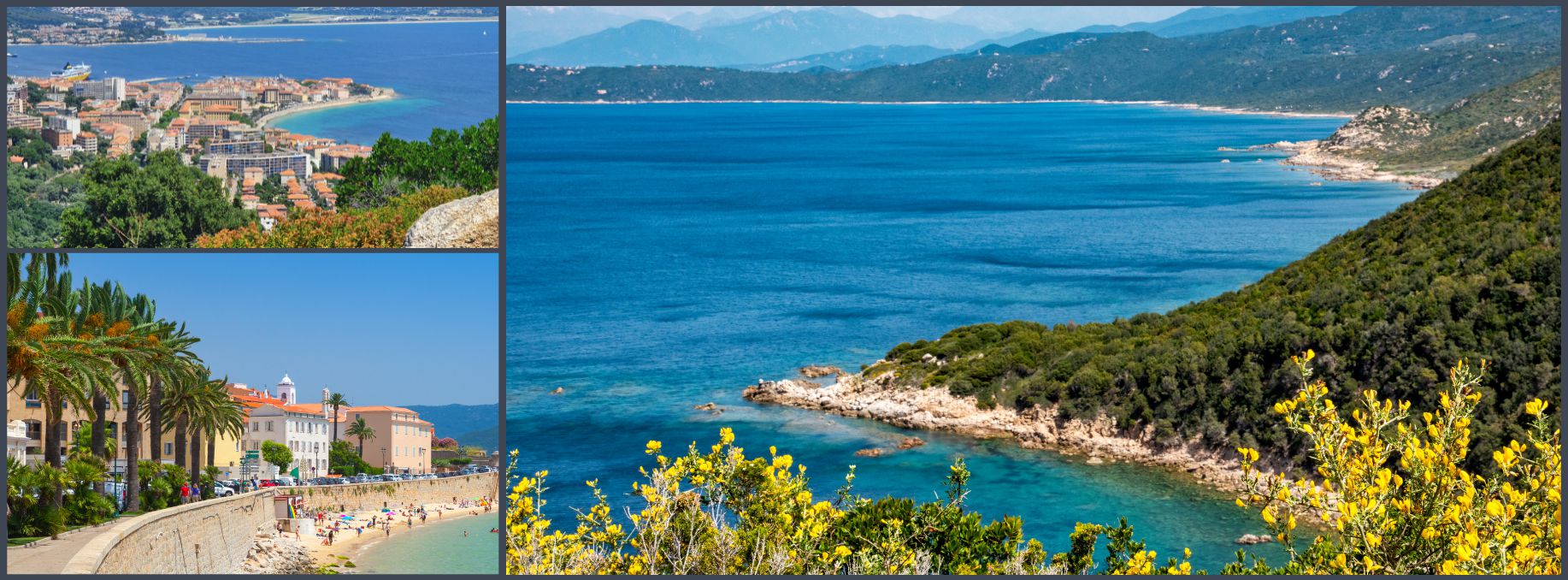
The smell of octane in the air, the power of Formula One engines hurtling round hairpin bends, the palpable excitement you could cut with a knife… it can only mean one thing… Yes, it’s the Monaco Grand Prix! For four days the tiny principality bursts into life in Technicolor, for an event that is truly not to be missed. This is the jewel in the crown of Formula One experiences, not just because it is attended by the jet set, celebrities, and royalty alike. For drivers, it is the race they all want to win. But, with the prestige comes added competition, overtaking on the narrow streets is near impossible and speed is strictly controlled. If F1 wasn’t cutthroat at the best of times, the Monaco Grand Prix certainly ramps it up to a whole new level. The race takes place on the actual streets of the one-square-mile country – bringing normal business to a complete standstill. Yet, this is taken by local residents on the chin (all schools and many businesses actually close during the four days), and the party feeling that permeates the Principality for the duration extends to locals and visitors alike. However, if you do need to get away from the madding crowd, the nearby Eze village is a medieval world away from the hustle and bustle. Nice, a short drive away, offers a chance to enjoy a more authentic side of the Riviera. Stroll the gorgeous Promenade des Anglais, shop up a storm in the Old Town, and enjoy the national pastime of watching the world go by. A chilled glass of rosé in hand, bien sur!
Included Shore Excursions
Eze and Panoramic French Riviera
Leave the hustle and bustle of Monaco behind during this picturesque coach and walking tour of Eze. The tiny village of Eze is one of the jewels of the south of France which is probably why it is chosen as a holiday spot by royalty, the rich and the famous. The deep blue waters of the Cote d'Azur are the dramatic backdrop for elegant Nice where you can get an eagle eye of the whole city from atop Castle Hill.
Depart from Fontvieille landing pier on foot with your guide to reach approx 500 m the pick up point assigned for the coaches due to Grand Prix.
Eze - Upon arrival, walk up to and through the 14th-century double gateway. A sentry walk leads into the steep and narrow streets, passageways and stairways. At times, the streets run beneath the carefully-restored houses that now serve as smart boutiques or artists' studios.
Panoramic Drive, Corniches - After the visit and time at leisure you will reboard your coach following the Middle Corniche, the panorama extends from the tip of Cap d'Ail to the Estérel. You will have a good view of Beaulieu, Cap Ferrat, Villefranche, Nice, and Cap d'Antibes. You will make one more stop for a nice view of Nice at Mont Boron.
Then you will enjoy the road driving along the Lower Corniche, another scenic route of the French Riviera. You will pass Beaulieu, a fashionable resort, Eze sur Mer, which lies beneath the cliffs of Eze Village, Cap d'Ail, sheltered by pine and cypress trees, and enter Monaco, your final destination.
Riviera Corniches
Experience the exquisite beauty of the French Riviera during this picturesque sightseeing drive through the Grande, Middle, and Lower Corniches. Between Nice and Menton the pine-forested Alpes drop precipitously to the sea, creating one of the most dramatic and inspiring views in Europe. Carved into the mountainside are three roads known as the Corniches.
Depart the pier via coach for a scenic sightseeing drive through the French Riviera
La Turbie - Your journey begins on the Grande Corniche, which offers marvelous vistas extending as far as Italy. A stop is then made at the village of La Turbie. Located at an altitude of 1,575 feet (473 metres), the village offers splendid panoramic views of the coast and Monaco.
Eze - After a brief photo stop at La Turbie, continue along the Middle, or 'Moyenne' Corniche for scenic views that extend to the north and village of Eze, where a comfort stop is made before continuing on to Nice. En route, admire stunning views of Beaulieu, Cap Ferrat and Villefranche.
Nice - Upon arrival in Nice, take a brief orientation tour along the Promenade des Anglais and past some of the town's beautiful squares. Following your orientation tour, continue on with the return drive to Monte Carlo via the Corniche Inférieure, or Lower Corniche, which runs along the foot of the mountain slopes and follows the coastal road.
Take in splendid vistas of picturesque Villefranche and a charming fishing village en route to the ship.
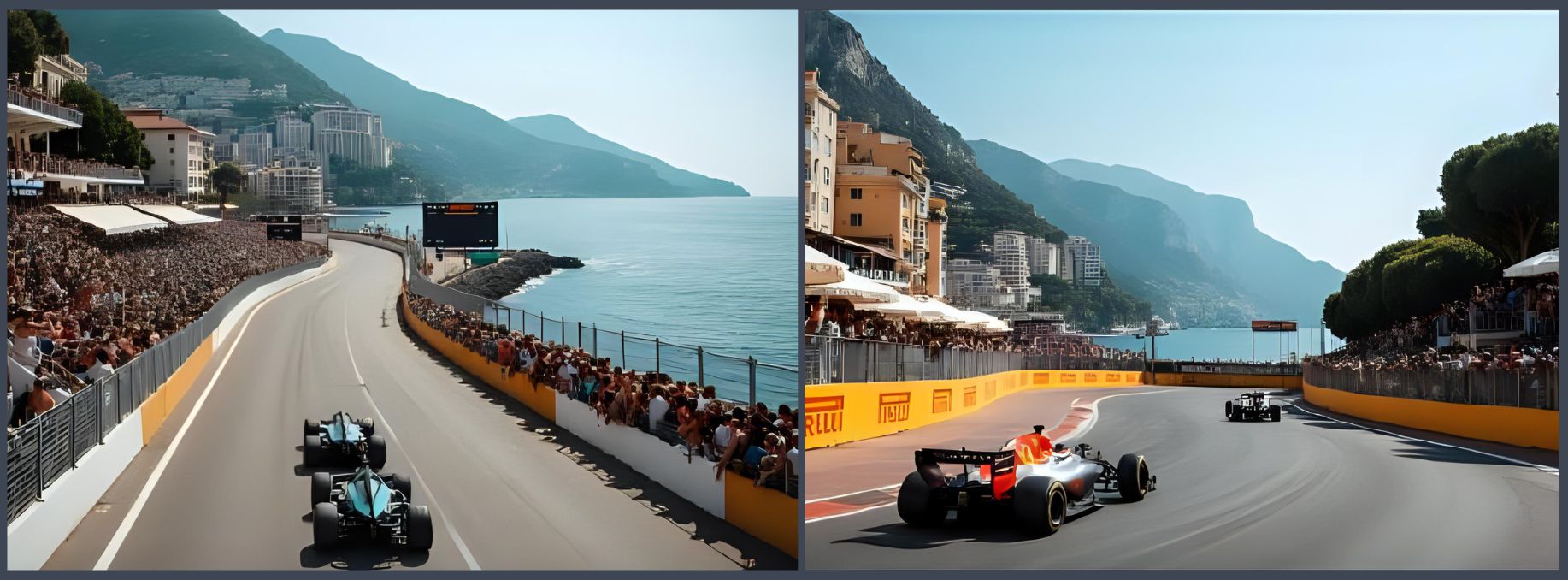
Days at sea are the perfect opportunity to relax, unwind, and catch up with what you've been meaning to do. So whether that is going to the gym, visiting the spa, whale-watching, catching up on your reading, or simply topping up your tan, these blue sea days are the perfect balance to busy days spent exploring shoreside.
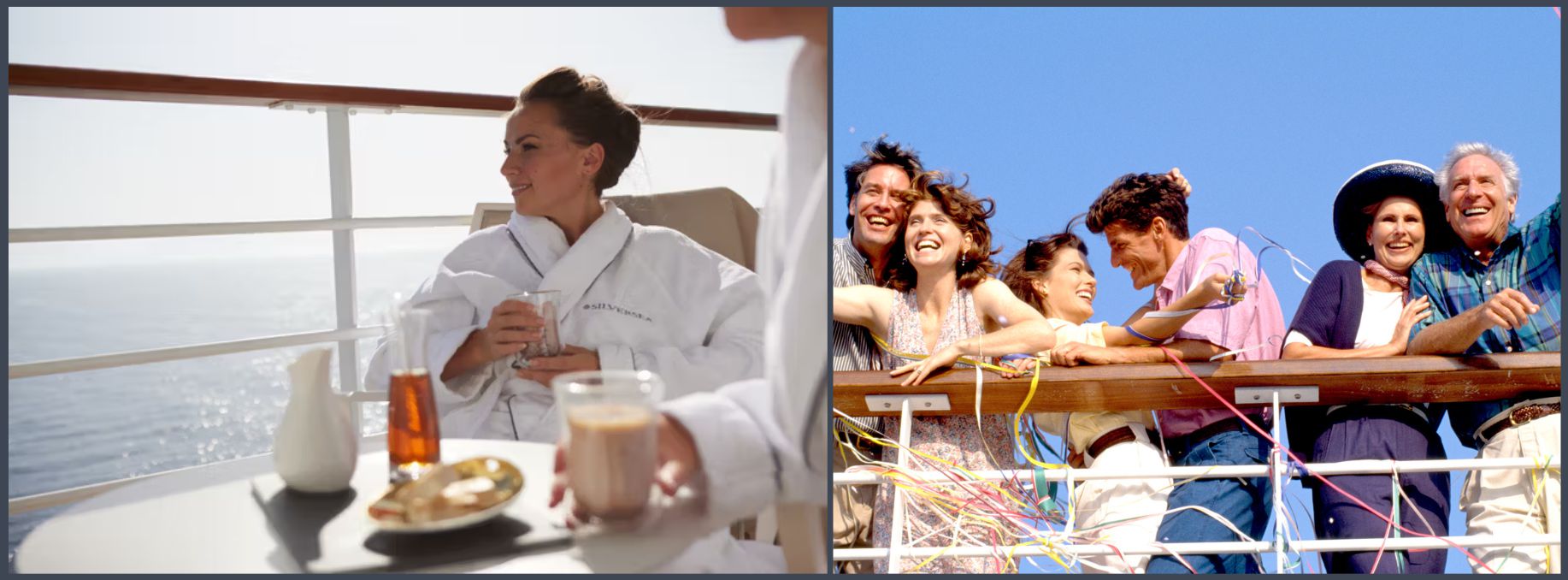
The infinite variety of street life, the nooks and crannies of the medieval Barri Gòtic, the ceramic tiles and stained glass of Art Nouveau facades, the art, and music, the throb of street life, the food (ah, the food!) - one way or another, Barcelona will find a way to get your full attention. The capital of Catalonia is a banquet for the senses, with its beguiling mix of ancient and modern architecture, tempting cafés and markets, and sun-drenched Mediterranean beaches. A stroll along La Rambla and through waterfront Barceloneta, as well as a tour of Gaudí's majestic Sagrada Família and his other unique creations, are part of a visit to Spain's second-biggest city. Modern art museums and chic shops call for attention, too. Barcelona's vibe stays lively well into the night when you can linger over regional wine and cuisine at buzzing tapas bars.
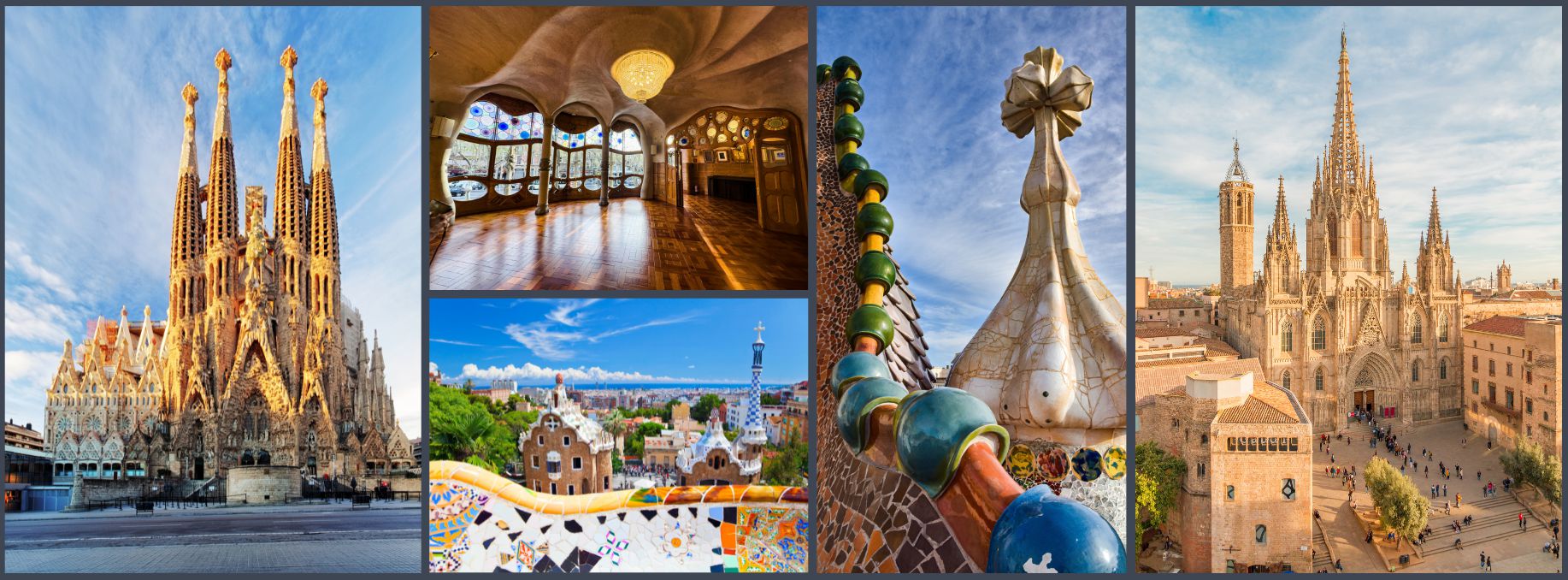
"Rome to Barcelona with Monaco's Grand Prix"
Specialized Consultants



























